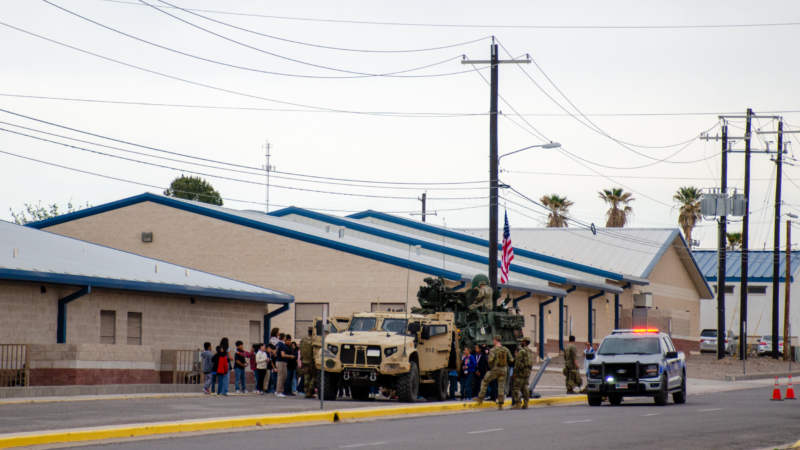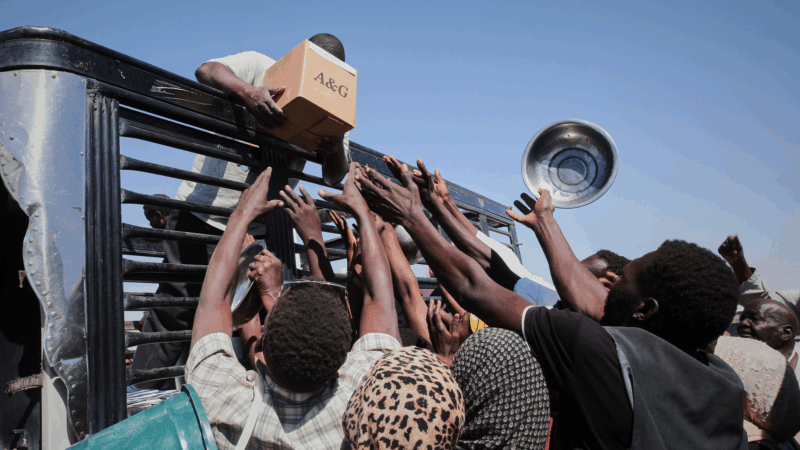Troops arrive at the border to help with enforcement despite fewer migrant crossings
PRESIDIO, Texas — Apart from the thrum of traffic, it’s a quiet afternoon in this town of roughly 6,000 along the southwest border where the Trump administration has deployed some 10,000 active-duty soldiers – a move that’s part of the president’s campaign promise to stop irregular crossings into the United States.
“I feel like they’re basically turning this place into a military zone, or a wanna-be conflict zone when in reality it isn’t,” said local resident Anibal Galindo of the deployment.
Galindo, who grew up here, says the region already has a strong law enforcement presence, from local and state police to the U.S. Border Patrol and other federal agencies, along with surveillance towers, traffic checkpoints and a large blimp the government says can detect a “suspicious” low-flying aircraft within a 200-mile range.
“The surveillance is here,” said Galindo. “So what else do you want?”
Presidio is in the Big Bend sector of the U.S. Customs and Border Protection – a stretch covering more than 500 miles of the Rio Grande, including a handful of other small towns and a national park too. Throughout this area, the Trump administration recently announced the deployment of some 500 active-duty soldiers.
The Army says that these soldiers won’t be arresting people suspected of being in the U.S. illegally, and instead, will offer “logistical support” to Border Patrol agents.

“We will not be actively on patrols,” Maj. Jared Stefani, who’s leading the Big Bend area deployment, said at a March press conference. “We’ll be at detection and monitoring sites to provide that information to [the] Border Patrol to then go out and do their law enforcement function.”
Judge Joe Portillo, the top official in Presidio County, said he welcomes the military’s presence even though border arrest numbers in this sector are low. According to Customs and Border Protection, there were 165 encounters in February.
“Presidio never experienced some of the influxes you saw in San Diego, or in Nogales, Arizona or in Eagle Pass, Del Rio, McAllen, El Paso,” said Portillo, an Army veteran.
Across the southwestern border, there’s been a significant drop in the amount of people crossing the U.S.-Mexico border — a number that sharply fell last year after reaching a record high toward the end of 2023 and that has continued to fall since Donald Trump took office.
Still, Lloyd Easterling, the chief border patrol agent for the area, says the Army’s presence is needed.
The troops are “giving us those additional eyes and ears out there to not only secure the border, but figure out when and where people came through,” said Easterling.
As part of the Army’s deployment to this rugged terrain, the military is sending Stryker vehicles, a 19-ton combat vehicle on eight wheels that has been used in Iraq and Afghanistan.
The use of these armored vehicles mark a new phase in the government’s approach to border security, and the Trump administration has been touting their use, sharing photos and videos of the vehicles along the border.
“The intent is to put them in places where, operationally, it makes the most sense and provides the most impact for us,” Easterling said in March. “We want people to see where they are, because it’s a method of deterrence.”
The Army was last deployed here in 2018, and before that during the 1990s. And in 1997, during a deployment of Marines on a drug surveillance mission, an 18-year-old high school student was shot and killed by a Marine on a drug surveillance mission. The young man was herding his goats about 20 miles from Presidio and carrying an antique rifle to protect them from coyotes.
Light from satellites will ruin majority of some space telescope images, study says
Astronomers have long been concerned about reflections from satellites showing up in images taken by telescopes and other scientific instruments.
Defense Department is reviewing boat strike video for possible release, Hegseth says
In a speech on Saturday, Defense Secretary Pete Hegseth defended the strikes, saying: "President Trump can and will take decisive military action as he sees fit to defend our nation's interests."
Bama, Miami in, Notre Dame out and Indiana No. 1 in College Football Playoff rankings
Nobody paying attention for the past 24 months would be surprised to see Indiana – yes, Indiana – leading the way into this year's College Football Playoff.
McLaren’s Lando Norris wins first F1 title at season-ending Abu Dhabi Grand Prix
Red Bull driver and defending champion Max Verstappen won the race with Norris placing third, which allowed Norris to finish two points ahead of Verstappen in the season-long standings.
A ban on feeding pigeons ruffles lots of feathers in Mumbai
The pigeon population has exploded — a result of people feeding the birds. For some it's a holy duty and a way to connect to nature. Critics point to health risks tied to exposure to pigeon droppings.
UN humanitarian chief: world needs to ‘wake up’ and help stop violence in Sudan
The UN's top humanitarian and emergency relief official has told NPR that the lack of attention from world leaders to the war in Sudan is the "billion dollar question".








